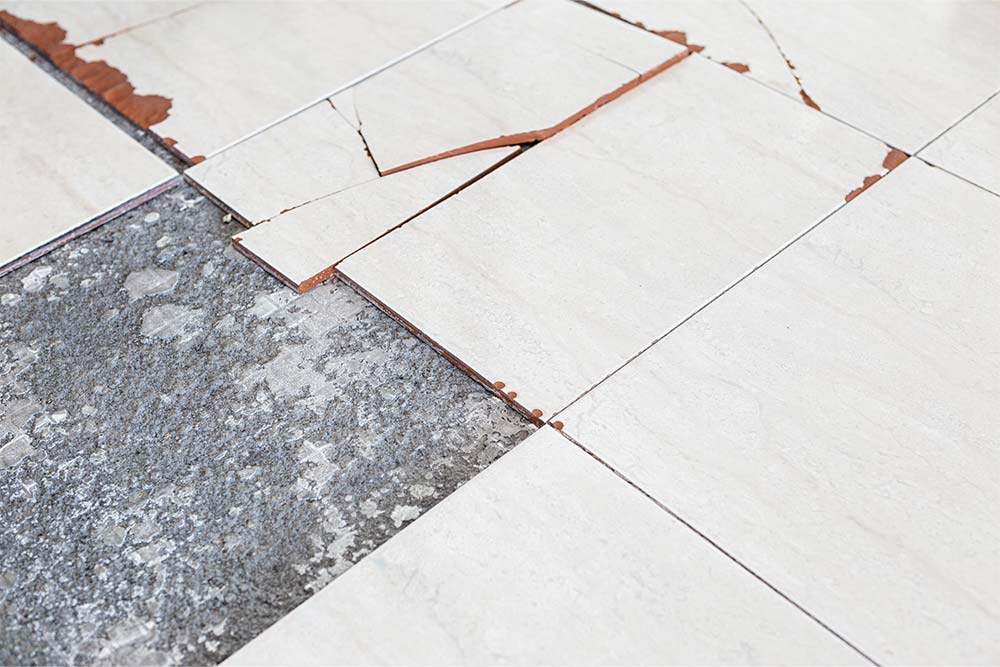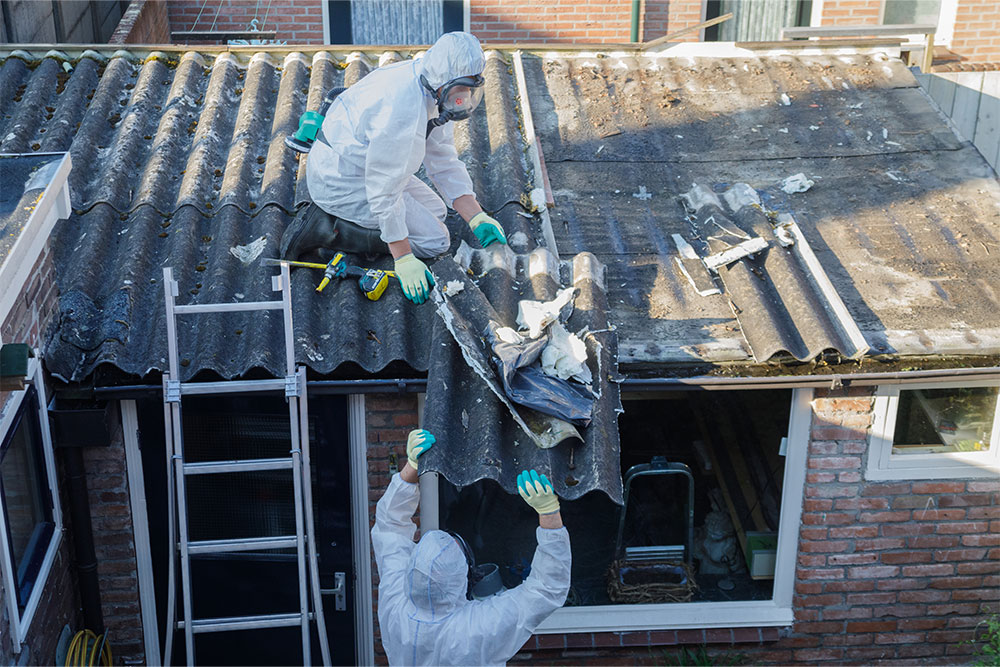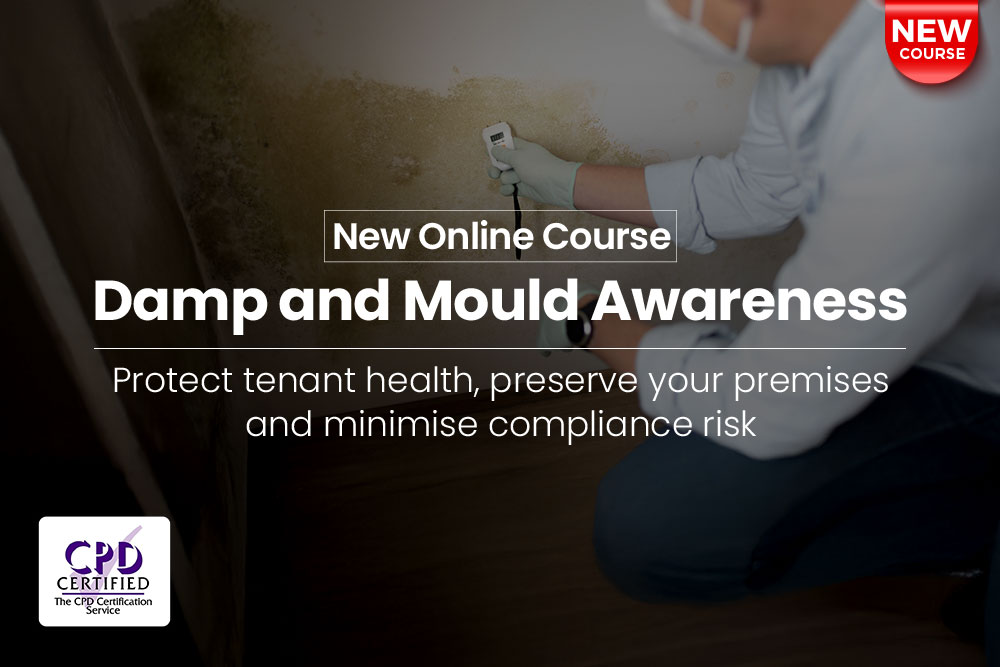
Can you remove asbestos yourself? The safest answer is no. Asbestos exposure is a severe health hazard, and any removal work puts you at significant risk. It’s almost always better to trust trained, licensed professionals with this work.
With that being said, DIY removal is possible in very specific circumstances. Our guide explains when you can remove asbestos yourself and what you need to consider first.
A reminder – asbestos exposure is extremely dangerous. DIY removal is not advisable. If there’s any doubt about safety, leave the work to professionals.
Why is DIY Asbestos Removal Dangerous?
Asbestos is a known hazard. It’s been linked to a range of severe health conditions, including:
- Lung cancer
- Mesothelioma
- Asbestosis
Despite being banned in the UK since 1999, asbestos exposure is still the cause of around 5,000 deaths every year.
It should be noted that the majority of asbestos-related fatalities are the result of past exposure. Before its ban, asbestos was an extremely popular building material and used in a range of different products. For years, people regularly worked with asbestos, unaware of the risks of repeated exposure. These workers, now in retirement, are most likely to be diagnosed with an asbestos-related disease.
Although most fatalities are a consequence of previously working with asbestos, there is no safe exposure level. Attempting to remove asbestos once can harm your health.
Asbestos-related diseases also have a long latency period. There can be years or even decades between exposure and an asbestos-related condition revealing itself.
Any DIY asbestos removal is strongly advised against because:
- It puts you at significant risk of exposure
- Incomplete removal will leave traces of asbestos behind
We’ve explored these risks in more detail below.
Exposure Risks
A little history about asbestos: It’s a naturally occurring mineral that’s a great insulator and resistant to flames and corrosion. These properties made it ideal for construction and manufacturing. Throughout the 20th century, asbestos was used to produce pipes, tiles, boilers and all manner of building materials, peaking in popularity in the 1960s.
Gradually, health authorities became aware of the connection between asbestos-containing materials (ACMs) and several lung conditions. It was eventually proven that microscopic asbestos fibres cause serious harm when inhaled. They embed themselves into lung tissue, causing extreme irritation and scarring.
The effects of this scarring vary. It can simply make breathing painful or can trigger the growth of cancerous cells. Whatever the eventual outcome, asbestos-related conditions are irreversible. Managing symptoms is the best you can hope for.
These harmful microscopic fibres are only released when asbestos is disturbed or damaged. Although it is possible to contain the release of these fibres, any DIY removal attempts are highly likely to result in exposure. Handling asbestos-containing materials almost guarantees asbestos fibres will become airborne.
Particular types of asbestos pose even higher risks. Some ACMs are friable, meaning they crumble much more easily than others. Any removal work of friable ACMs is guaranteed to expose you to airborne fibres. And to an untrained eye, it’s extremely difficult to identify these higher-risk ACMs.

Removal Risks
You need to be sure every trace of asbestos has been removed from the site to make it safe. Any leftover asbestos-containing materials become a significant hazard as they’ve been disturbed.
A false sense of security may even exacerbate the risk of exposure. Without confirmation from professionals, you may wrongly assume that all asbestos has been removed and the area has been made safe. You could unknowingly be repeatedly exposing yourself and others to asbestos fibres, which drastically increases the likelihood of developing a serious disease.
When it comes to removal, it’s generally safer to leave the work to a professional asbestos abatement contractor. They’ll be competent to do the job safely and remove all asbestos-containing materials.
Can You Remove Asbestos Yourself in Small Amounts?
While not advised, you can remove certain types of asbestos-containing materials yourself. However, there are only a handful of situations where DIY removal is allowed.
Can You Remove Asbestos Yourself in Your Home?
Homeowners can tackle certain ACMs on their property themselves.
Start by checking this government website. It will direct you to your local authority and their asbestos removal guidance.
Guidance will vary depending on your location, but you may be able to remove asbestos cement products if you are extremely careful and follow all relevant guidance—guidance we won’t repeat here as we maintain removal work is best done by professionals.
Can You Remove Asbestos Yourself in Your Workplace?
Workplaces have tighter asbestos regulations, as more people are typically at risk compared to private homes.
Employers have a legal duty to manage asbestos risks on their premises. These duties are set out by the Control of Asbestos Regulations 2012 (CAR).
Under CAR, employers (or those in control of a property) must:
- Determine if ACMs are present in their building and, if so, what condition they’re in
- Assess the risks of exposure and put in place suitable control measures
- Maintain a register of the location and condition of ACMs
- Write an asbestos management plan
- Inform employees at risk of exposure to the location and condition of ACMs
You should determine the presence and condition of ACMs through an asbestos survey. With this information, you can go on to complete your risk assessment and asbestos management plan.
Removal may be the best way to make your workplace safe. But this is not guaranteed. Official guidance from the government and the Health and Safety Executive (HSE) advises that asbestos be left alone, provided it’s in good condition and in a place where contact is unlikely.
Asbestos in good condition and left undisturbed is considered largely safe since it shouldn’t release fibres into the air. So, in some cases, leaving it in place for the time being may be the best option.
If you must remove asbestos, review the HSE’s guidance first. It explores asbestos removal in the workplace and the two types of work: licensable and non-licensable.

Removal Work that Requires a License
High-risk work with ACMs can only be done by licensed contractors. Licensable work includes work with:
- Sprayed asbestos coatings
- Asbestos insulation and asbestos insulation board
- Asbestos lagging
These materials are considered high-risk because they break apart easily when handled.
Any removal work of these ACMs guarantees heavy exposure to airborne asbestos fibres. Only licensed asbestos abatement contractors have the knowledge, skills and qualifications to safely work with these highly hazardous asbestos-containing materials.
Removal Work that Doesn’t Require a License
Some asbestos work is classed as low-risk, so it can be carried out without a license. Non-licensed work must meet at least one of these descriptions:
- Short maintenance tasks that involve non-friable asbestos-containing materials (non-friable ACMs are more solid so they release fewer fibres when handled)
- Removal when ACMs are in good condition and unlikely to be broken up during the task, for example, when asbestos is coated or contained within cement
- Collecting samples of suspected asbestos for analysis or checking if asbestos fibres are present in the atmosphere
- Sealing ACMs that are in good condition
The concentration of airborne asbestos must also stay within strict limits.
While workers don’t need a license to carry out this work, they must be competent. You must know how to minimise risks to yourself and anyone else who might be exposed during the entire job, including disposing of the ACMs.
Are There Safe Alternatives to Removal?
Yes. Remember, official government and HSE guidance advises that asbestos be left alone provided it’s in good condition. Your course of action depends on your asbestos risk assessment.
However, you can’t just leave ACMs in place and hope for the best. Employers must also:
- Record the location and condition of ACMs in the asbestos register
- Periodically check the ACMs to confirm they’re still in good condition
- Provide any workers at risk of exposure with asbestos awareness training
Asbestos awareness training doesn’t qualify workers to handle or remove asbestos. Instead, it explains how to identify ACMs and avoid exposure. Employers are legally required to provide staff with this training if ACMs are present in their workplace. It’s also necessary for workers in industries where asbestos exposure is a consistent risk, such as construction.
Asbestos Awareness Training
Awareness training will be critical in keeping people safe if you’ve confirmed asbestos is on your property. It will also help protect contractors who regularly work in properties where asbestos may be present.
Our online Asbestos Awareness Training course teaches you how to identify asbestos-containing materials and ways to stay safe if you do. It doesn’t cover asbestos-related work, but it will help you spot asbestos, avoid exposure and know what to do if you think you’ve disturbed any ACMs.






















































































































































































































































































































































































































































































































































































































































































































































